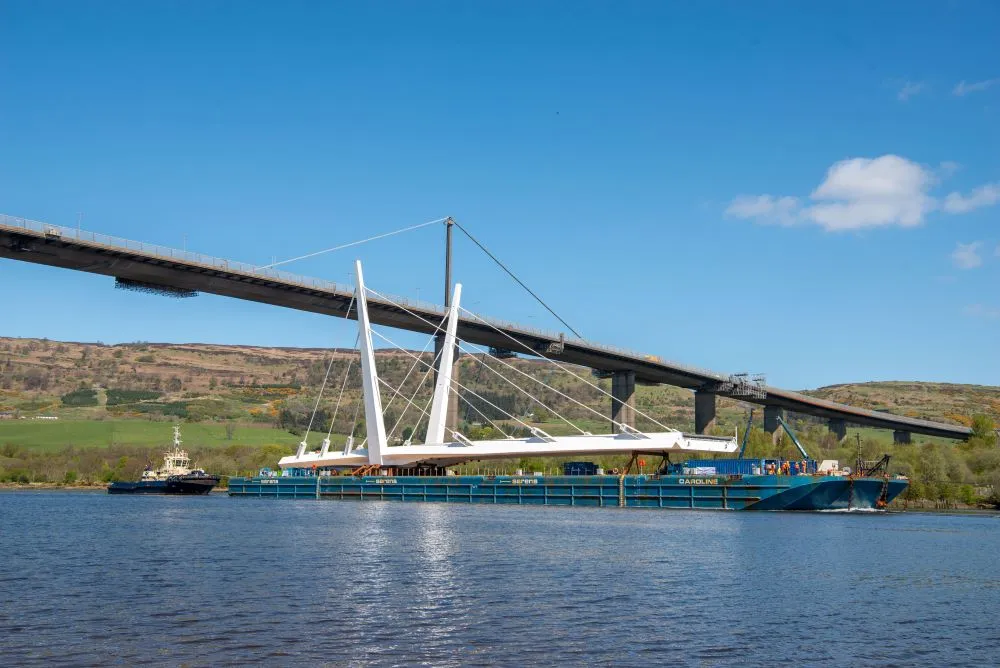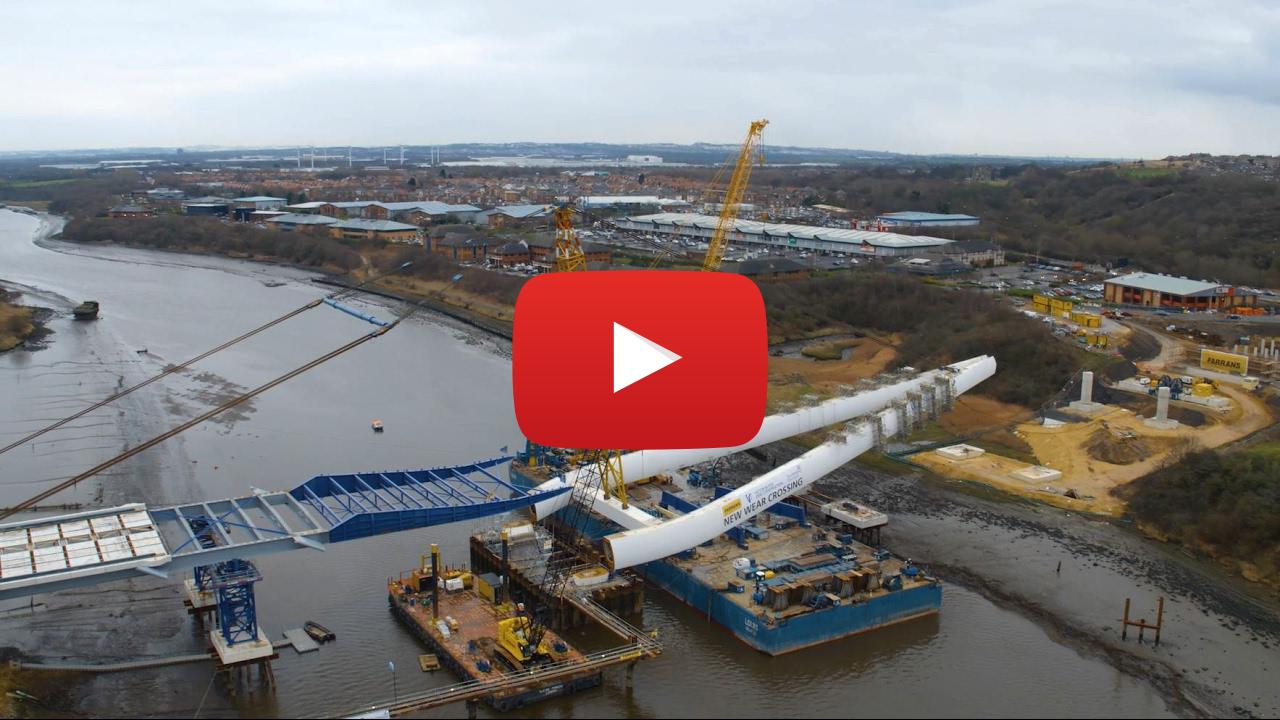
The covered and vaulted Princess Quays Bridge will be renamed when it opens in the spring enabling pedestrians and cyclists to cross over the busy dual carriageway.
The positioning operation meant that first the route was cleared of signage, guardrails and street lights. The bridge was then lowered onto two wheeled transporters – one at each end of the structure - and ‘driven’ across Myton Street and along the westbound carriageway of the A63 to the marina.
Finally, the structure required a multiple point turn to position it above the pylons onto which it was lowered and secured.
The bridge is covered by a curving steel canopy and when finished will have sheltered viewing balconies at each end. As part of the bridge construction there will be new landscaped public areas at both the Princes Quay and marina sides.
The
“Our team worked exceptionally hard throughout the weekend to move the street furniture, prepare the route and position the bridge by wheeling it to its final destination,” said Tom Peckitt, Highways England project manager. “The team worked throughout the night after the installation to reopen the A63 15 hours ahead of schedule.”









